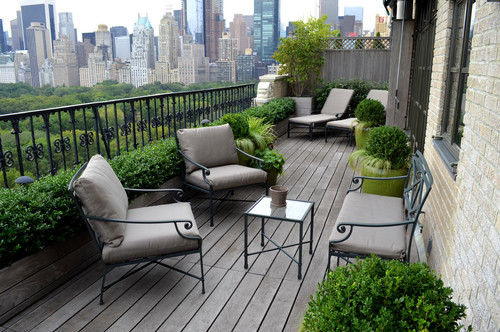With not-so great views and awkward furniture that doesn’t seem to fit through doors, Freda has offered advice to help individuals design a small area.
Reduce clutter
A small space will feel larger the less clutter there appears to be. Having lots of individual, free-standing cabinets and dressers will sometimes make the space feel smaller and more hodgepodge. Consider having streamlined, built-in cabinets put in, instead, for storage of books, clothing, and other objects.
Maximize the space
Let no corner go wasted in a small space. Make use of the vertical height of a room by having cabinets reach all the way up to the ceiling wherever possible. Choose furniture pieces that can serve more than one function. Murphy beds are an excellent way to make the space more usable for different functions — i.e. bedroom at night and office workspace by day. Mirrors can also help make the space feel larger. Opt for fewer, larger pieces of furniture, rather than lots of smaller ones. A connection should exist between the interior and exterior of a home, so that the garden appears to flow outward as a natural extension of the inner space. It’s important to create a sense of rhythm and flow that is as seamless as it is beautiful.
Rule of threes
It’s interesting how groups of three objects generally look better than groups of two or four. For whatever reason, odd number pairings work better and stand out more visually than even numbered pairings. It’s easier to create symmetry in even numbered groupings, but odd numbers are more dynamic and visually appealing.
Let there be light
One of the most important influencers of mood in a space is the lighting. It’s important to have a mix of task, accent, and ambient lighting to make the space at once both visually appealing and as functional as possible. For an outdoor space, try to have a mix of high-voltage sconce lighting and low-voltage up-lighting mixed in with the plants themselves. For indoors, a mix of overhead lighting and soft, ambient lamps is usually ideal.
Why the long space?
Long spaces can be broken up into separate “rooms” to help create a cozier, more intimate feeling. Terraces and decks can easily be divided up by having part of the space used for one task – i.e. dining, and another part for something else, i.e. comfortable lounge seating. A long living room might have a cozy conversational seating area, and a separate area for curling up on your own with a good book. Furniture and rugs can be placed in such a way as to create a separation of the different spaces for the feeling of multiple rooms all in one place.
Color schemes that work
It’s generally helpful to design a room or outdoor space with one dominant color in mind, along with one secondary color, and also a third accent color. If there is any existing furniture, choose colors that already exist in the largest patterns of the furniture. To make the space feel bigger, try using the darkest colors at floor level (i.e. wood floors or rugs) contrasted with light colored walls and furniture, with the brightest at ceiling level, much the same as the earth is darkest at soil level and brightest when you look up at the sky. Light colors will generally make a space feel larger than darker colors. On the other hand, dark colors will make a small space feel cozy — add some soft textured pieces like velvet or wool to make it even more inviting.











